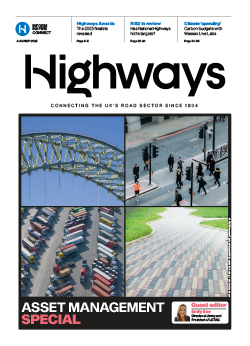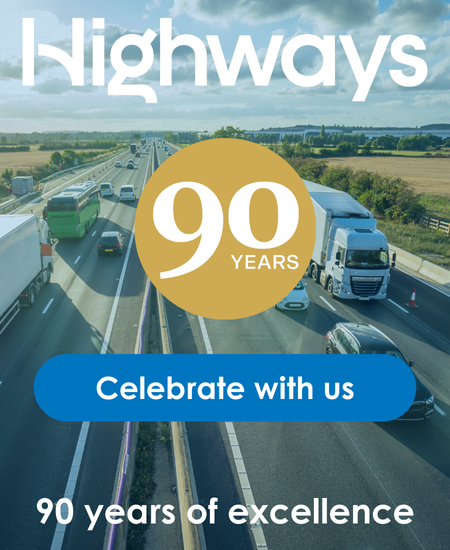National Highways has flunked its road user satisfaction target for the second road investment strategy (RIS 2: 2020-2025), ending the term with 'disappointing' results that saw satisfaction decline almost across the board.
This is the second time the national operator has missed a RIS target for satisfaction - albeit under different methodologies. Highways England, as it was then known, missed its target for road user satisfaction from 2015-2020 – achieving 89.2% at the end of RIS 1 against a target of 90%.
Under the new system, the latest Strategic Roads User Survey (SRUS) shows overall satisfaction levels had sunk to 69% for 2024-2025, a drop from last year’s 71% and below target levels, which had been set to increase year-on-year.
So NEAR but so far
'A key part of the decrease in overall satisfaction has been the roadworks to deliver the National Emergency Area Retrofit (NEAR) programme,' said Transport Focus, which produces the SRUS and is the watchdog for users of motorways and major ‘A’ roads.
NEAR involved significant roadworks across all lane running (ALR) motorways, which are some of the busiest routes on the network, to build 151 new emergency areas in response to safety concerns about the controversial road design.
The good news for National Highways is that the NEAR works were completed in March and 'there are early signs that satisfaction is beginning to recover' as Transport Focus noted.
However, the impact of the NEAR programme works across April 2024 to March 2025 appears to have dragged down overall satisfaction for the year.
Journeys that included ALR stretches of smart motorway with roadworks dropped steeply from 61% satisfaction in 2023/24 to 48% in 2024/25. Whereas satisfaction on ALR stretches without roadworks, non-smart motorways (with or without roadworks) and ‘A’ roads (with or without roadworks) has been 'broadly stable', Transport Focus said.
A National Highways spokesperson said: 'Installing more than 150 extra motorway emergency areas was a commitment made by the previous government in 2022, with a stretching deadline of Spring 2025, to support drivers’ confidence whilst travelling on smart motorways. We successfully completed this work in March, delivering around five years’ worth of work in just over three.
'Drivers should now experience fewer delays and the M1 is now entirely free of major roadworks for the first time since 2008.'
Key findings
'Management of roadworks continues to be one of the weaker performing areas,' the SRUS noted, with 46% of those passing through roadworks on their journey satisfied with their management, a drop from 49% last year.
Elsewhere, road user satisfaction with journey time in 2024-2025 was at 67%, similar to last year’s 68%, although down from the 71% seen in 2022/23.
Satisfaction with the road surface – another key user priority – managed to stabilise this year, remaining at 68%, after 'a substantial drop from 73% the previous year', Transport Focus said.
Feelings of safety have shown a small drop over the last two years, from 82% in 2022/23 to 80% this year.
Transport Focus said: 'The headline results from the survey for 2024/25 are disappointing, with overall journey satisfaction at 69%. This continues the downward trend seen last year, from 73% in 2022/23.'
KPI missed
The SRUS is the key measurement for satisfaction. This year's results, combined with earlier lacklustre figures, mean National Highways has failed to meet its KPI for RIS 2 in road user satisfaction.
At the start of the RIS 2, ministers set National Highways (then Highways England) the KPI of achieving an 82% road user satisfaction score in 2020-21 and 2021-22, 'with year on year increases in following years'.
After a break in 2021 due to the COVID pandemic, the 2021-2022 SRUS survey found that overall only 69% of road users 'were satisfied with their last motorway or major ‘A’ road journey'.
While results improved in 2022-2023, they have been on the decline ever since, with the latest overall satisfaction of 69% continuing the trend and leaving National Highways short of its target.
Transport Focus was sympathetic to National Highways, pointing out that the NEAR programme, which did so much to undermine satisfaction, was 'vital work but road users have felt the impact'.
Improvements made
Transport Focus also highlighted National Highways' efforts 'to innovate and drive a more customer focussed culture'.
This includes improving the diversion experience when roads are closed, 'with trials in the East region expected later this year aimed at boosting awareness on approach to a closure and confidence using the diversion route'.
Transport Focus concluded: 'The decrease in overall satisfaction in 2024/25 reinforces the importance of learning lessons and prioritising the user experience during roadworks.
'This includes consistently running roadworks at the highest safe speed to minimise delay, warning people in advance so they can avoid roadworks altogether if possible, minimising the length of stretches of roadworks and the time they are in place and providing better signage at the roadside to explain what is going on.'
In its response to the report, National Highways highlighted numerous initiatives, including:
- Making roadworks easier to navigate: the government-owned company has rolled-out 'clearer, more customer-friendly guidance and a new stakeholder assurance framework to make sure roadworks meet customer expectations'.
- Better information, earlier: National Highways said 'seven day in advance roadworks updates are now more accurate - 3% better than last year and over 30% better than in 2020'.
- Clearer signs during incidents: National Highways said it had 'improved how we set signs and signals when there’s a problem on the road - reducing last-minute lane changes and increasing compliance with speed limits and red Xs'.
Methodology
The factors involved in user satisfaction are, in descending order of importance:
- Satisfaction with journey time
- Journey time compared to expectation (reliability)
- Whether there were delays caused by things other than roadworks
- Level of traffic
- How safe it felt on the road
- Road surface
The latest SRUS report contains data from 1 April 2024 to 31 March 2025 and is based on 9,419 interviews with road users.






